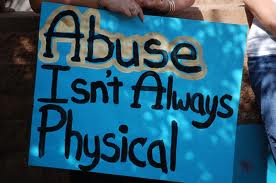Time Zone Madness: Scheduling Meetings for Everyone
You may have had experiences where scheduling a meeting for two departments in the same building can be a three ring circus. You use video conferencing to make it easier and more convenient so you can guarantee they push through and also be productive.
Now, with a multitude of teams in different time zones and spread across various continents, how are you going to schedule a group discussion that will play out well for everyone?
Global Workforce = Global Headaches
The extension of this is you can use certain providers like Blue Jeans who are leaders in video conferencing for IT when scheduling meetings at different hours for different people in different locations. CIO magazine notes time zones can be a bigger stumbling block to collaboration than anything else.
The world doesn’t operate on New York’s clock, so let’s say you have to talk to several different teams located in varying locations such as Los Angeles, New York, Osaka, Mumbai and Amsterdam. You can use this handy scheduling tool to help you visualize.
As you can see, there are points where you get close to having everyone “in the room” at the same time, but you can’t quite get there either because of lunch hours or going outside of normal office hours.
Starting the discussion at 9:00 AM in New York means your Los Angeles office is standing over the coffee maker in their pajamas, Osaka is going to bed, Mumbai has thirty minutes before the office closes and Amsterdam just got back from lunch.
Pass It On
With this feature, you can hand off the meeting to the group in the time zone closest to the one that couldn’t make it. They can then bring those people up to speed by using the app to record what’s happening during the group discussion, and pass it back to you in New York.
As noted in a Microsoft white paper, flexible scheduling and taking work-life balance into account is key to making this succeed.
Many key players who have a commitment to making it work will generally shift their office hours as long as this balance is respected.
Think of it as a relay, where information is shared and then handed off across teams.
Let’s have a look at the above scheduling problem and see how this kind of video conference can be relayed so that everyone has a chance to contribute.
- New York starts the meeting at 11:00 AM local time on Monday.
- Los Angeles attends at 8:00 AM where they live and has a normal workday afterward.
- Amsterdam attends at 5:00 PM according to their location’s clock and goes home afterward.
- Tuesday morning at 8:00 AM where they live, Amsterdam starts the relay meeting at 8:00 AM.
- Mumbai joins in at 11:30 AM according to their area’s hours.
- Osaka joins everybody else at 3:00 PM based on the local hours.
- Tuesday evening, Amsterdam connects with New York and Los Angeles to share what they previously discussed with Osaka and Mumbai.
There are lots of different variations to this, but the critical component is flexibility.
You must use the tools at your disposal to make sure everyone is on the same page, even if you’re not all in the same room.
The Harvard Business Review gives a high sight line to those looking to learn how best to structure flex time and video meetings, and lays out some basic ground rules such as not requiring any member to attend a group conversation between 10:00 PM and 7:00 AM, while also promoting consistent allotted hours and respecting the factors such as commutes, child care arrangements and other commitments.
Correcting power imbalances also plays a role in team cohesion, as does empathy, engagement, and allowing different groups to have unstructured time with each other. You are going to need people who can collaborate and understand where other people are coming from.
Quality Shopping List
Your high performance employees need to have better than average skills at working and collaborating with others. Your leadership needs to foster open communications, a positive atmosphere, clear goals and well-defined roles and responsibilities.
Leadership needs to be participatory, responsive to concerns, and transparent, especially when the inevitable conflicts arise and need to be managed. This is an ensemble cast, not a one-man show, and the fastest way to sabotage your staff is to give them a stereotypical boss instead of a leader. You have the platform for success, now you can start building up that launch.
Isn’t a company like a family? Here are eight tips for improving family communication which not surprisingly are also effective for corporate communication.






